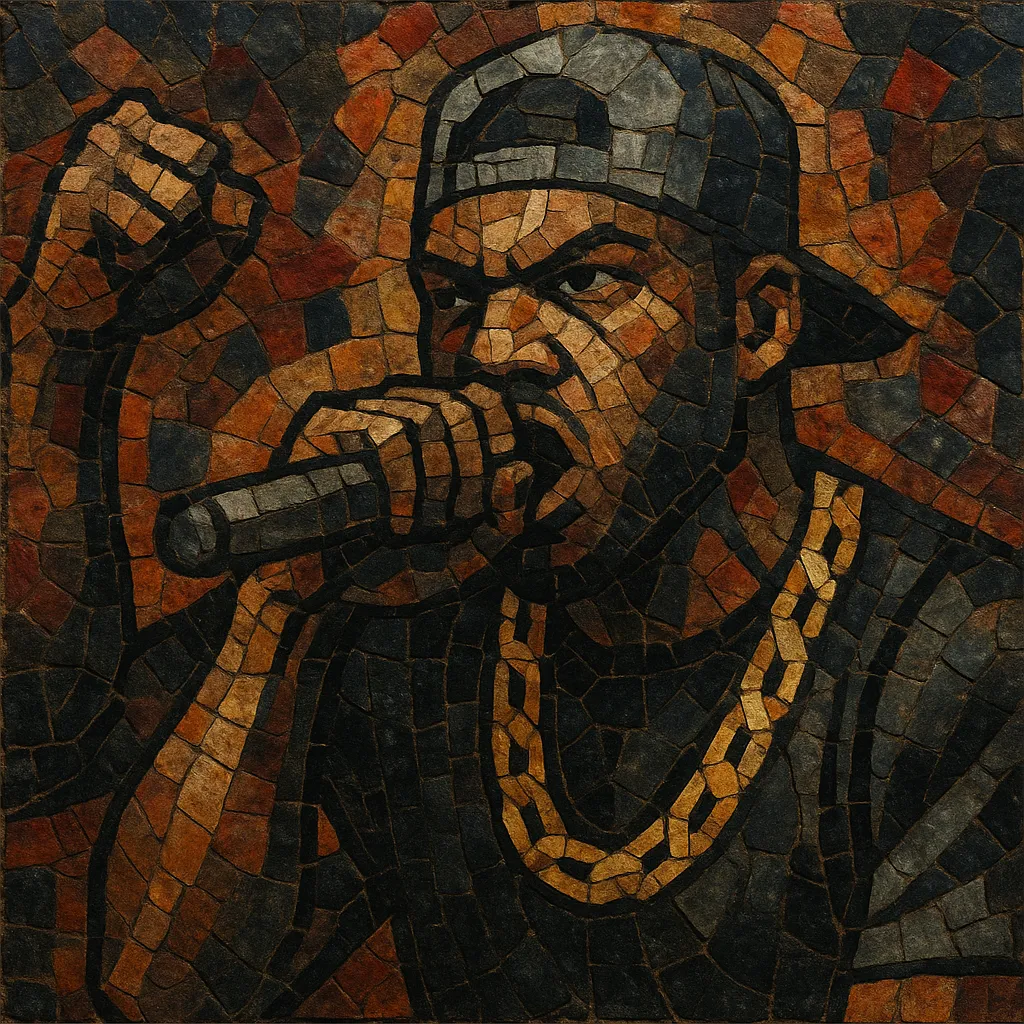Hardcore hip hop is a confrontational, high-intensity branch of hip hop defined by hard-hitting drums, dense or minimal yet gritty production, and aggressive vocal delivery.
Its lyrics often focus on social realism, political critique, street narratives, and uncompromising braggadocio, delivered with a commanding presence and raw timbre.
Production ranges from sample-collage “wall of sound” aesthetics to stark boom-bap minimalism, frequently emphasizing punchy snares, saturated kicks, loud horn or siren stabs, and dissonant textures.
While rooted in New York’s late-1980s scene, the style quickly became a durable template for forceful hip hop across the United States and beyond.
Hardcore hip hop crystallized in New York during the latter half of the 1980s as artists pushed beyond party-oriented old school styles into tougher, more militant sounds. Acts like Run-D.M.C. stripped arrangements down to booming drums and forceful chants, while Schoolly D and Ice-T brought stark street reportage. Public Enemy’s Bomb Squad production team pioneered dense, siren-filled sample collages that matched politically charged performances, helping define the genre’s confrontational edge.
The late 1980s and early 1990s saw the style coalesce around hard, minimal breakbeats (“boom-bap”) and aggressive deliveries. Boogie Down Productions and EPMD advanced punchy drum programming and no-nonsense flows, while Public Enemy’s sonic overload popularized a noisy, industrial-leaning palette. The assertive posture and street-level focus set a template for countless crews.
Throughout the 1990s, East Coast acts like Wu-Tang Clan, Onyx, M.O.P., and Mobb Deep gave hardcore hip hop darker harmonies, brooding atmospheres, and martial hooks. Simultaneously, West Coast innovators (e.g., Ice-T) fused the hardcore ethos with regional narratives, intersecting with the rise of gangsta rap. The genre became a benchmark for intensity, authenticity, and rugged drumwork across underground scenes.
Hardcore hip hop’s sonic and lyrical codes—crushing snares, aggressive cadence, sparse minor-key loops, and unflinching themes—continue to inform underground hip hop, horrorcore, and rap-metal crossovers. Its performance style, crowd-control hooks, and sample-forward grit remain enduring tools for artists seeking raw impact.


